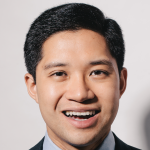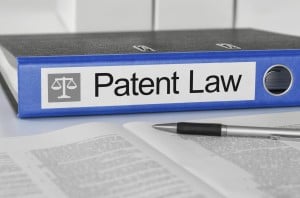At the U.S. Supreme Court (photo by David Lat).
Happy new year! And happy new installment of Supreme Court Clerk Hiring Watch. My last SCOTUS clerk hiring roundup came out back in June 2019, so there’s tons for us to discuss.
(I don’t feel quite as much pressure to publish these reports now that I tweet the hires in real time, over at @SCOTUSambitions — originally the Twitter feed for my novel, now converted to a clearinghouse for SCOTUS clerk hiring news. These Above the Law write-ups offer color commentary and analysis, but if you just want the hires, follow @SCOTUSambitions.)
We now have a complete clerk roster for October Term 2019 (and we have checked the names for accuracy against the official list released by the Court’s Public Information Office). This means that we now know the identity of the one clerk who was missing from the last roundup: Joseph Masterman (Yale 2016/Thapar (E.D. Ky.)/Kethledge), now clerking for Justice Samuel Alito. Since he was the last clerk we learned about, we will, consistent with tradition, give Joe Masterman a special profile in these pages, as ATL’s “Mr. Irrelevant.”
In some ways, Masterman seems like a typical SCOTUS clerk. He’s a white guy with impeccable credentials: Harvard College and Yale Law School, followed by clerkships with two feeder judges, Judge Raymond Kethledge of the Sixth Circuit and Judge Amul Thapar, then a district judge for the Eastern District of Kentucky (but as you can see on Masterman’s LinkedIn profile, he also clerked for Judge Thapar for a few months on the Sixth Circuit). After his clerkships, Masterman worked at Cooper & Kirk, the elite D.C. litigation boutique that’s a “feeder firm” to the conservative justices, before arriving in the Alito chambers.
But in other ways, Joe Masterman is not your typical SCOTUS clerk. Here are some tidbits we’ve gleaned about him from our sources:
- He was the quarterback of his high school football team — which is “hilarious to anyone who knows him,” and the team was terrible.
- Speaking of hilarity, he’s known for being very, very funny — and he has the credentials to prove it. In college, he was a member of the Harvard Lampoon, the celebrated humor publication whose alumni include Conan O’Brien, Colin Jost, and some two dozen writers for The Simpsons.
- At Yale Law School, Masterman won the moot court competition — along with his moot court partner Zayn Siddique, now clerking for Justice Elena Kagan.
- While at YLS, Masterman served as a speechwriter for then-Dean Robert Post — where he regularly wrote jokes into Dean Post’s remarks, which kept on getting cut.
- Speaking of cuts, for a number of years Masterman “sported an ill-advised mustache — but wisely chose to shave it before starting his clerkship with Judge Kethledge.”
I’m guessing that Masterman is the only Lampoon alumnus among the OT 2019 clerk class — but as reported by the Associated Press, the 16 women and 23 men are an extraordinary group who boast many other distinctions. They include a former Marine who served two tours in Afghanistan (Joseph Falvey — thanks to him for his service); the second blind person to serve as a SCOTUS clerk (Laura Wolk, who had retinal cancer as a child); two Rhodes Scholars (Megan Braun and Mark Jia); a law professor (Mark Storslee, clerking for Justice Neil Gorsuch — who has hired another law prof as a clerk, Stephanie Barclay, for OT 2020); and a true Mr. Irrelevant, James “Matt” Rice, who was picked 1,525th — i.e., dead last — in the 2010 Major League Baseball draft.
Turning to the bigger picture, now that we have the full list of OT 2019 clerks, we can make some demographic observations:
1. Gender. As noted, the class of 39 clerks has 16 women and 23 men, making it 41 percent female — below last term’s figure of 45 percent, but above the historical average since 2005, which hovers around a third.
2. Feeder schools. The mix of schools producing SCOTUS clerks is a bit more diverse and a little less elitist than last term. For OT 2018, the perennial top three schools in the U.S. News rankings — Harvard, Yale, and Stanford — produced 25 out of 37 clerks. For OT 2019, the trio produced only 23 out of 39 clerks, and the third-ranked school for minting clerks was U. Chicago, not Stanford.
For this Term, Yale again led with 11 clerks, followed by Harvard with nine, Chicago with four, California rivals Stanford and Berkeley with three apiece, Notre Dame and Columbia with two each, and five schools — Cornell, Duke, Michigan, NYU, and UVA — claiming a single clerk.
3. Feeder judges. The 39 clerks served, by my count, 47 different judges before coming to the Court — an even higher number than last term’s 41. Recall, of course, that many clerks do at least two lower-court clerkships before arriving at SCOTUS (and one, Breyer clerk Nicholas Rosellini, did three). That figure of 47 includes then-Judge Kavanaugh and then-Judge Gorsuch, but even if you subtract them, you’re left with 45 lower-court judges.
The judges with more than one clerk at the Court for this term are Garland (3), Katzmann (3), Sutton (3), Friedrich (3), Kavanaugh (2), Fletcher (2), Friedland (2), Griffith (2), Katsas (2), Livingston (2), Srinivasan (2), Thapar (2), Wilkinson (2), and Chhabria (2). Excluding Kavanaugh, you’re left with 13 feeder judges, of whom four hail from the D.C. Circuit — down from last term’s six (but that six included then-Judge Kavanaugh). Two are district judges, Judge Friedrich (D.D.C.) and Judge Chhabria (N.D. Cal.). (I’m not counting Judge Thapar, now on the Sixth Circuit, but his two clerks now at the Court both clerked for him when he was a district judge.)
One thing to note on feeder judges: it’s a bit arbitrary to focus on just one term, since the track record of a true feeder judge spans multiple years, and it can be a bit of an accident as to why a clerk ends up in one term or another. For example, sometimes a justice will hire two clerks at or around the same time, but have one clerk start in one term and the other clerk start in the subsequent term.
So if you want to get a better sense of feeding patterns, don’t look at just OT 2019 in isolation. Instead, consider the completed OT 2019 list, the not yet completed OT 2020 list, and the handful of hires already made for OT 2021, also reported below. That changes the picture quite a bit.
For example, consider these three feeders: Judge O’Scannlain (9th Cir.), Judge Furman (S.D.N.Y.), and Judge Oetken (S.D.N.Y.). Judges O’Scannlain and Furman have only one clerk each at the Court in OT 2019, and Judge Oetken has none. But if you look at the three terms in aggregate — OT 2019, OT 2020, and OT 2021 — Judges O’Scannlain and Oetken have a much more impressive three clerks (with the last two terms far from complete), and Judge Furman has a whopping four.
I’ve already given shout-outs to some of the more notable OT 2019 clerks. Here are two OT 2020 clerks who stand out to me as “firsts”:
1. Justice Sotomayor has stated that she seeks to hire clerks “committed to making a contribution to the world.” One of her OT 2020 clerks, who won’t arrive at the Court until the summer, has already broken barriers.
Imelme Umana (Harvard 2018/Wilkins) is the first African-American woman to serve as President of the Harvard Law Review. She’s also the first African American in the role since a certain Barack Obama, almost three decades ago.
2. Joshua Revesz (Yale 2017/Garland) will be clerking for Justice Kagan in OT 2020. If his distinctive surname rings a bell, perhaps you’ve heard of his famous father: Professor Richard “Ricky” Revesz, former Dean of NYU Law School, and a former Supreme Court clerk (Marshall/OT 1984).
What makes Josh Revesz a possible first? Consider his similarly high-powered mother, Professor Vicki Been, currently serving as Deputy Mayor of Housing and Economic Development for New York City — and also a former SCOTUS clerk (Blackmun/OT 1984).
Upon information and belief — I posed this question to #appellatetwitter, and nobody could give me an earlier example — Josh Revesz is the first child of two SCOTUS clerks to go on to clerk for the Court himself. There have been many parent-child SCOTUS clerks over the years — for examples, see Tony Mauro’s list of father-daughter SCOTUS clerk pairings — but I’m not aware of a SCOTUS clerk who can claim this divine DNA on both sides.
I did, however, predict this would come to pass, in a 2004 post at my very first blog, Underneath Their Robes (“UTR”). Commenting on the Times wedding announcement of two Supreme Court clerks, I wrote: “Was that the announcement for a wedding, or for a legal professional eugenics experiment gone mad? Such is the way of the world. … [L]egal geniuses marry each other — and produce brilliant babies. The Elect [UTR-speak for SCOTUS clerks], like Ptolemaic rulers, marry one another, so as not to dilute their bloodlines. Their weddings are presided over by fellow members of the Elect. And a generation later, their offspring will join the ranks of the Elect themselves, heading off to clerk at the Court, where they will in turn meet the loves of their lives, beginning the cycle anew …”
Whoops, sorry, I got lost in reverie! Back to reality.
Here are the SCOTUS clerk lists for OT 2019 and OT 2020, plus a few hires for OT 2021 (not yet in list form, but I’ll put them in list form once I have a critical mass). Again, remember to follow @SCOTUSambitions for real-time hiring updates (or fairly real-time updates; I don’t tweet anything until I’ve confirmed it upon good authority).
If you have any corrections to this information, or if you have any hiring news I have not yet reported, please reach out by email or text (917-397-2751). Please include the words “SCOTUS Clerk Hiring” in your email or text message, perhaps as the subject line of your email or the first words of your text, because that’s how I locate these tips in my overwhelmed inbox. Thanks!
OCTOBER TERM 2019 SUPREME COURT CLERK HIRES (as of January 21, 2020)
Chief Justice John G. Roberts
1. Zaki Anwar (Harvard 2017/Sutton/Srinivasan)
2. David Beylik (Harvard 2018/Kavanaugh/Friedrich (D.D.C.))
3. Megan Braun (Yale 2016/Brinkema (E.D. Va.)/Katzmann/Bristow Fellow)
4. Joseph Falvey (Yale 2017/D. Friedrich (D.D.C.)/Griffith)
Justice Clarence Thomas
1. Caroline Cook (Chicago 2016/ Sykes/Katsas)
2. Brian Lipshutz (Yale 2015/W. Pryor/Katsas)
3. Matt Rice (Berkeley 2016/Ikuta)
4. Laura Wolk (Notre Dame 2016/J.R. Brown/Hardiman)
Justice Ruth Bader Ginsburg
1. Alyssa Barnard-Yanni (Columbia 2015 / Nathan (S.D.N.Y.) / Katzmann)
2. Marco Basile (Harvard 2015 / Watford / Barron)
3. Susan Pelletier (Harvard 2016 / Garland)
4. Michael Qian (Stanford 2016 / Garland / Bristow Fellow)
Justice Stephen G. Breyer
1. Celia Choy (Yale 2012/Rakoff (S.D.N.Y.)/Katzmann)
2. Dahlia Mignouna (Yale 2016/Srinivasan)
3. Nicholas Rosellini (Stanford 2016/C. Breyer (N.D. Cal.)/Friedland/Cuellar (Cal.))
4. Eugene Sokoloff (Yale 2012/Sack)
Justice Samuel Alito
1. Hunter Bruton (Duke 2016/A. Duncan/Huvelle (D.D.C.)/Bristow Fellow)
2. Richard Cleary (Columbia 2015/Livingston/Leon (D.D.C.))
3. Jessica Wagner (UVA 2014/O’Scannlain/J. Smith)
4. Joseph Masterman (Yale 2016/Thapar (then-E.D. Ky.)/Kethledge)
Justice Sonia Sotomayor
1. Siobhan Atkins (NYU 2014/Furman (S.D.N.Y.)/Lohier)
2. Nick Crown (Yale 2016/Ellis (E.D. Va.)/Higginson)
3. Jodie Liu (Harvard 2015/Livingston/Millett)
4. Anuradha Sivaram (Berkeley 2014/Thapar (then-E.D. Ky.)/Kozinski)
Justice Elena Kagan
1. Jordan Bock (Berkeley 2017/Friedland/Chhabria (N.D. Cal.))
2. Alex Miller (Harvard 2017/Moss (D.D.C.)/Griffith)
3. Mica Moore (Chicago 2017/W. Fletcher/Chhabria (N.D. Cal.))
4. Zayn Siddique (Yale 2016/D. Pregerson (C.D. Cal.)/Tatel)
Justice Neil M. Gorsuch
1. Michael Francisco (Cornell 2007/Tymkovich)
2. Kelly Holt (Chicago 2017/Wilkinson)
3. Kurt Johnson (Michigan 2015/Wilkinson)
4. Stephen Yelderman (Chicago 2010/Gorsuch)
Justice Brett M. Kavanaugh
1. Audrey Beck (Notre Dame 2017/Larsen/Sutton)
2. Sophia Chua-Rubenfeld (Yale 2018/Grant)
3. Trenton Van Oss (Harvard 2017/Friedrich (D.D.C.)/Grant)
4. James Xi (Stanford 2017/Sutton)
Justice John Paul Stevens (retired/deceased)
1. Michael Knapp (Harvard 2016/Gleason (D. Alaska)/Garland)
Justice Anthony M. Kennedy (retired):
1. Clayton Kozinski (Yale 2017/Kavanaugh)
Justice David H. Souter (retired):
1. Mark Jia (Harvard 2016/W. Fletcher)
OCTOBER TERM 2020 SUPREME COURT CLERK HIRES (as of January 21, 2020)
Chief Justice John G. Roberts
1. Leslie Arffa (Yale 2018/Livingston/Boasberg (D.D.C.))
2. Patrick Fuster (Chicago 2018/Watford/Chhabria (N.D. Cal.))
3. Benjamin Gifford (Harvard 2017/Rakoff (S.D.N.Y.) /Katzmann)
4. Stephen Hammer (Harvard 2018/Sutton/Katsas)
Justice Clarence Thomas
1. Phil Cooper (Chicago 2017/W. Pryor/Stras)
2. Jack Millman (NYU 2016/O’Scannlain/E. Carnes)
3. ?
4. ?
Justice Ruth Bader Ginsburg
1. Jack Boeglin (Yale 2016/Srinivasan/Calabresi)
2. Eliza Lehner (Yale 2017/Watford/Furman (S.D.N.Y.))
3. David Louk (Yale 2015/Boasberg (D.D.C.)/Katzmann)
4. ?
Justice Stephen G. Breyer
1. ?
2. ?
3. ?
4. ?
Hired by Justice Breyer for OT 2021: Elizabeth Deutsch (Yale 2016/Pillard/Oetken (S.D.N.Y.))
Justice Samuel Alito
1. ?
2. ?
3. ?
4. ?
Justice Sonia Sotomayor
1. Greg Cui (Yale 2017/Fletcher/Furman (S.D.N.Y.))
2. Kristen Loveland (NYU 2016/Furman (S.D.N.Y.)/Lohier)
3. Imelme Umana (Harvard 2018/Wilkins)
4. Sarah Weiner (Yale 2017/Tatel/Oetken (S.D.N.Y.))
Justice Elena Kagan
1. Peter Davis (Stanford 2017/Srinivasan/Boasberg (D.D.C.))
2. Madeleine Joseph (Harvard 2018/S. Lynch/Howell (D.D.C.))
3. Isaac Park (Harvard 2018/Srinivasan/Oetken (S.D.N.Y.)
4. Joshua Revesz (Yale 2017/Garland)
Justice Neil M. Gorsuch
1. Trevor Ezell (Stanford 2017/Sutton/Oldham)
2. John Ramer (Michigan 2017/Kethledge/Bristow)
3. Mark Storslee (Stanford 2015/O’Scannlain)
4. ?
Hired by Justice Gorsuch for OT 2021: Stephanie Barclay (BYU 2011/N.R. Smith) and Louis Capozzi (Penn 2019/Scirica/Wilkinson).
Justice Brett M. Kavanaugh
1. Harry Graver (Harvard 2019/Wilkinson)
2. Tyler Infinger (NYU 2016/Rao)
3. Zoe Jacoby (Yale 2019/Barrett)
4. Megan McGlynn (Yale 2017/W. Pryor/Friedrich (D.D.C.))
Hired by Justice Kavanaugh for OT 2021: Athie Livas (Yale 2019/Thapar/Friedrich (D.D.C.)).
Justice Anthony M. Kennedy (retired):
1. ?
Justice David H. Souter (retired):
1. ?
Once again, do you know about a hire not previously reported, or do you have an addition or correction to any of this info? Please share what you know by email or text (917-397-2751). Please include the words “SCOTUS Clerk Hiring” in your email or text message, as the subject line of your email or the first words of your text, because that’s how I locate these tips in my inundated inbox. Thanks!
Earlier:
 David Lat, the founding editor of Above the Law, is a writer, speaker, and legal recruiter at Lateral Link, where he is a managing director in the New York office. David’s book, Supreme Ambitions: A Novel (2014), was described by the New York Times as “the most buzzed-about novel of the year” among legal elites. David previously worked as a federal prosecutor, a litigation associate at Wachtell Lipton, and a law clerk to Judge Diarmuid F. O’Scannlain of the U.S. Court of Appeals for the Ninth Circuit. You can connect with David on Twitter (@DavidLat), LinkedIn, and Facebook, and you can reach him by email at dlat@laterallink.com.
David Lat, the founding editor of Above the Law, is a writer, speaker, and legal recruiter at Lateral Link, where he is a managing director in the New York office. David’s book, Supreme Ambitions: A Novel (2014), was described by the New York Times as “the most buzzed-about novel of the year” among legal elites. David previously worked as a federal prosecutor, a litigation associate at Wachtell Lipton, and a law clerk to Judge Diarmuid F. O’Scannlain of the U.S. Court of Appeals for the Ninth Circuit. You can connect with David on Twitter (@DavidLat), LinkedIn, and Facebook, and you can reach him by email at dlat@laterallink.com.








 Jordan Rothman is a partner of
Jordan Rothman is a partner of 









